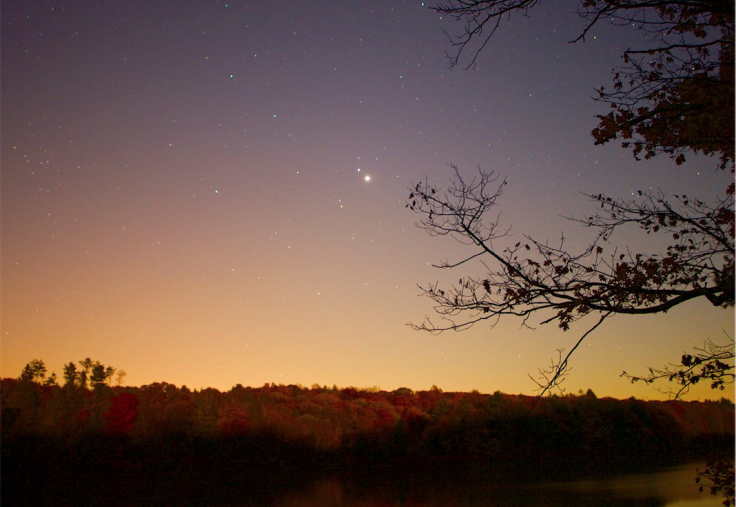Venus, Mars, and Jupiter will dance in a cosmic triangle in rare planet formation

Venus and Mars were Jupiter's children in Roman mythology, and it seems the three will have a family reunion in the sky throughout October. Venus, Mars, and Jupiter will come close together in the sky before dawn this week, in a "planetary dance" which will be admired by stargazers and astronomers worldwide. It's more common that two planets come together in alignment in the night sky year-round, but it is much rarer to have three group together.
This unusual configuration in the sky is exceptionally rare because these planets don't normally line up. It takes Venus 225 days to orbit the sun, Mars 686 days and Jupiter 12 years. The next time the planets will come together like this will be in January 2021.
The planets are separated by millions of miles. Planets that appear close to each other in the sky is called a planetary conjunction.
#Venus, #Jupiter and #Mars conjunction seen above Xianuodukji Peak Yading, Sichuan, #China. https://t.co/SJ9OBlQ586 pic.twitter.com/SBKDmcHcH2
— Epic Cosmos (@EpicCosmos) October 25, 2015
The planets are bright enough to see with the naked eye, so you don't need a telescope to see the planets. The planets will be seen in the morning sky before dawn (around 5am GMT) towards the east until the end of October, astronomer Mark Bailey tells the Yorkshire Evening Post.
HOW TO WATCH THE 'PLANETARY DANCE'
- Find a place with low light pollution, away from street lights and the glow of the city to see this
- Look east in the sky to see the planets together, which is best seen an hour before sunrise
- The full moon tomorrow will light up the planets tomorrow morning around 8:05am GMT, providing a clear view of the planets
The planets will then stay in close alignment for several days, reaching their actual closest point on November 3, report ABC News.
"With the unaided eye, you'll see them very close together and it will look very beautiful. If you're up in the early morning, around an hour before sunlight, the three of them should be high enough above the horizon to see without any major objects getting in the way." Amateur astronomer Ian Musgrave from the University of Adelaide told ABC News.
Early mornings throughout October are an exciting time to stargaze as Venus, Jupiter, Mars and even Mercury will be close to one another in different configurations.
Venus is the easiest and largest planet to see, and appears 12 times brighter than Jupiter, which appears second largest, according to the BBC. Mars is the sky's faintest planet 250, and is only be visible an hour before sunrise all across the world.
© Copyright IBTimes 2025. All rights reserved.





















